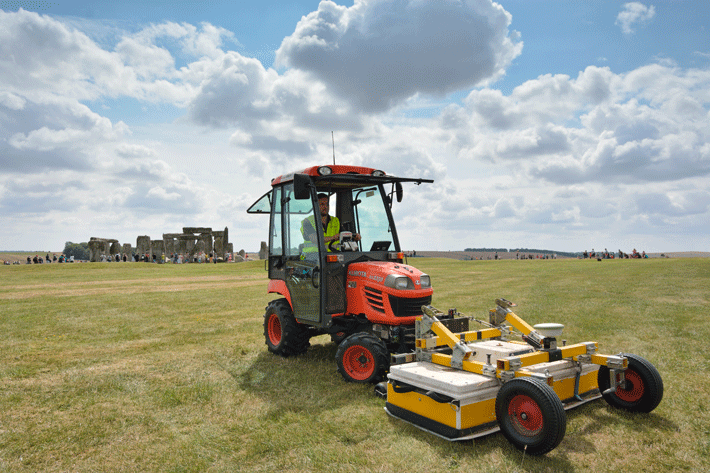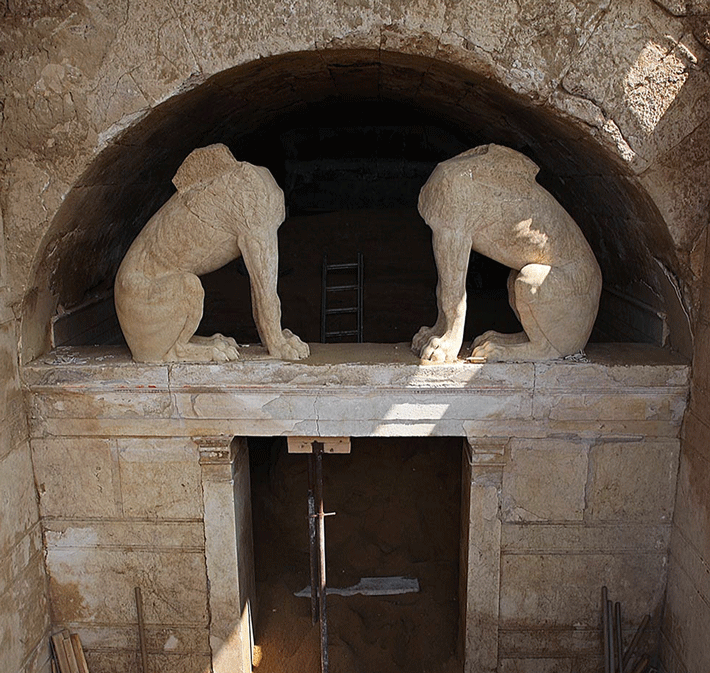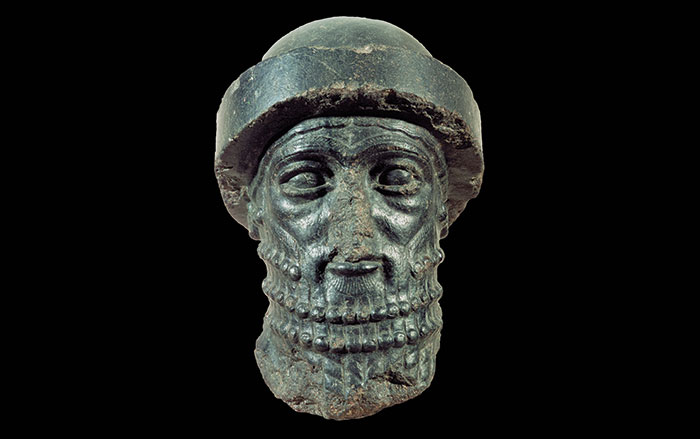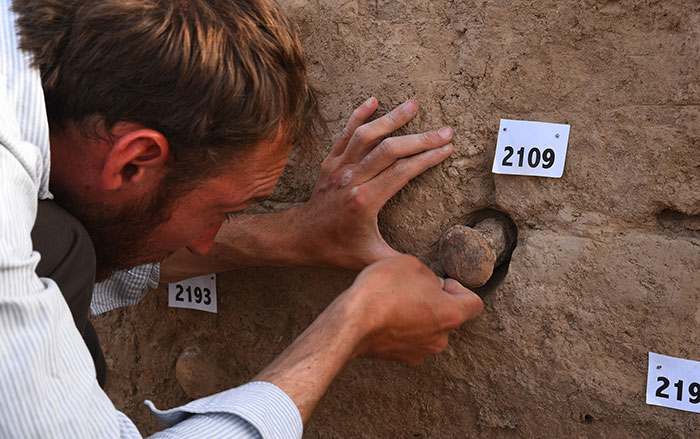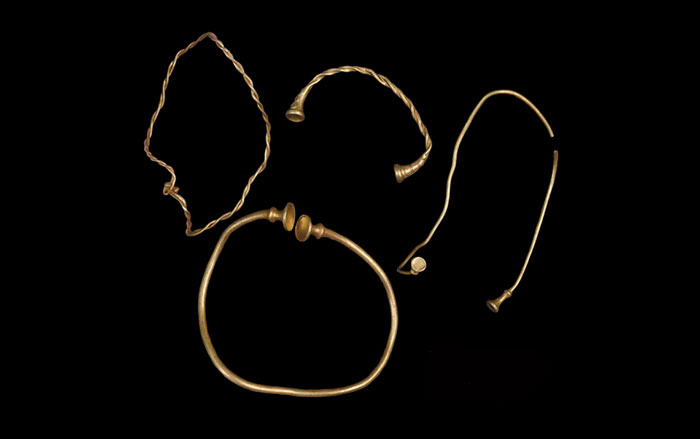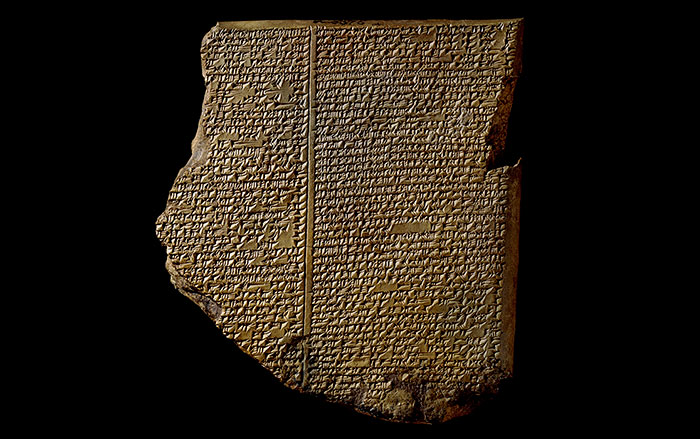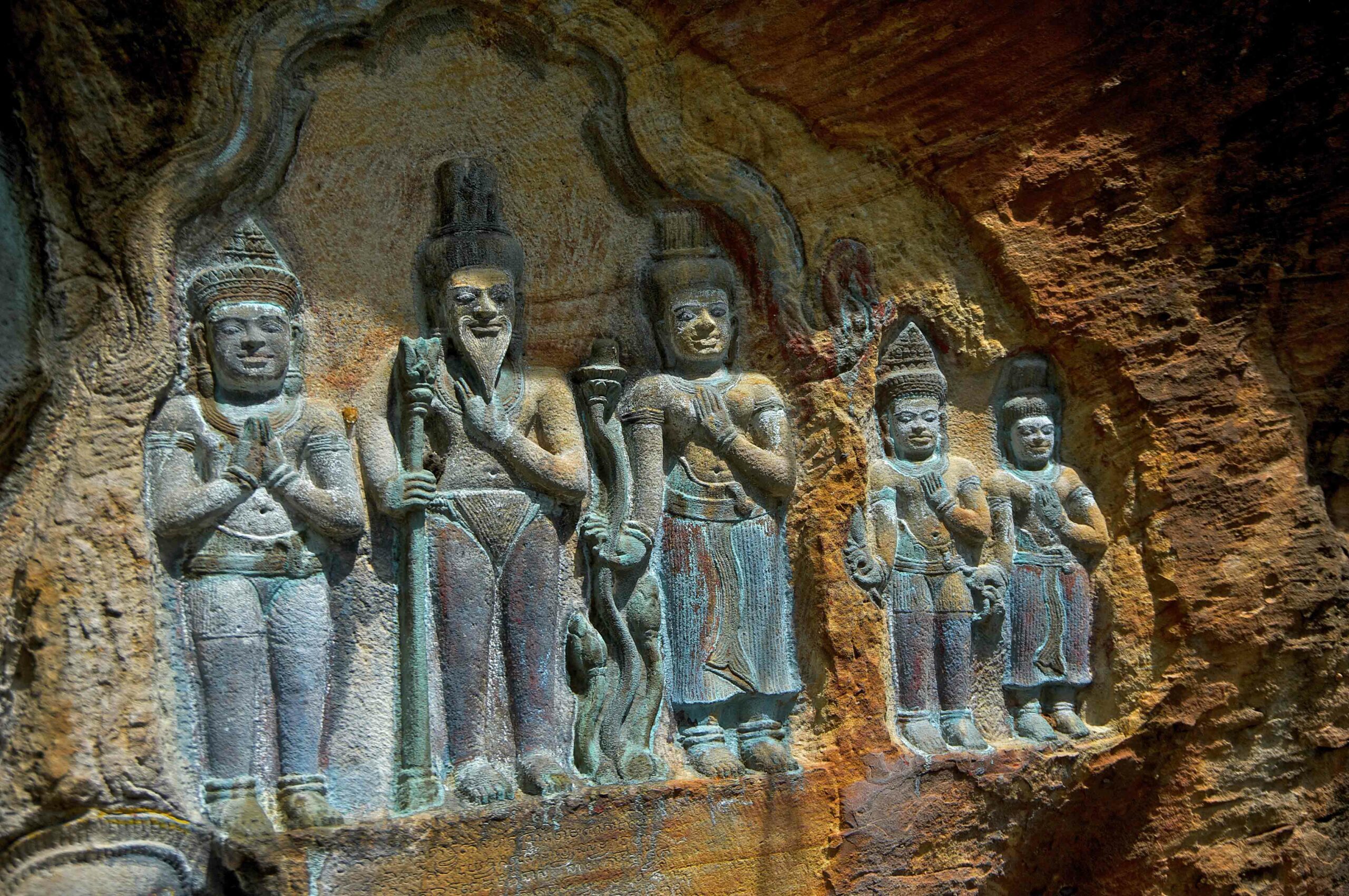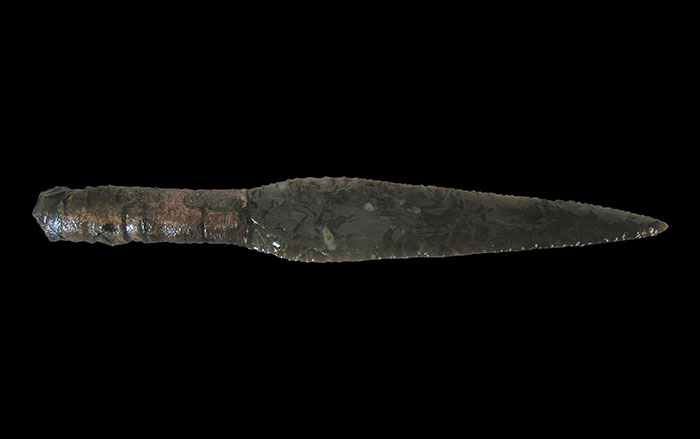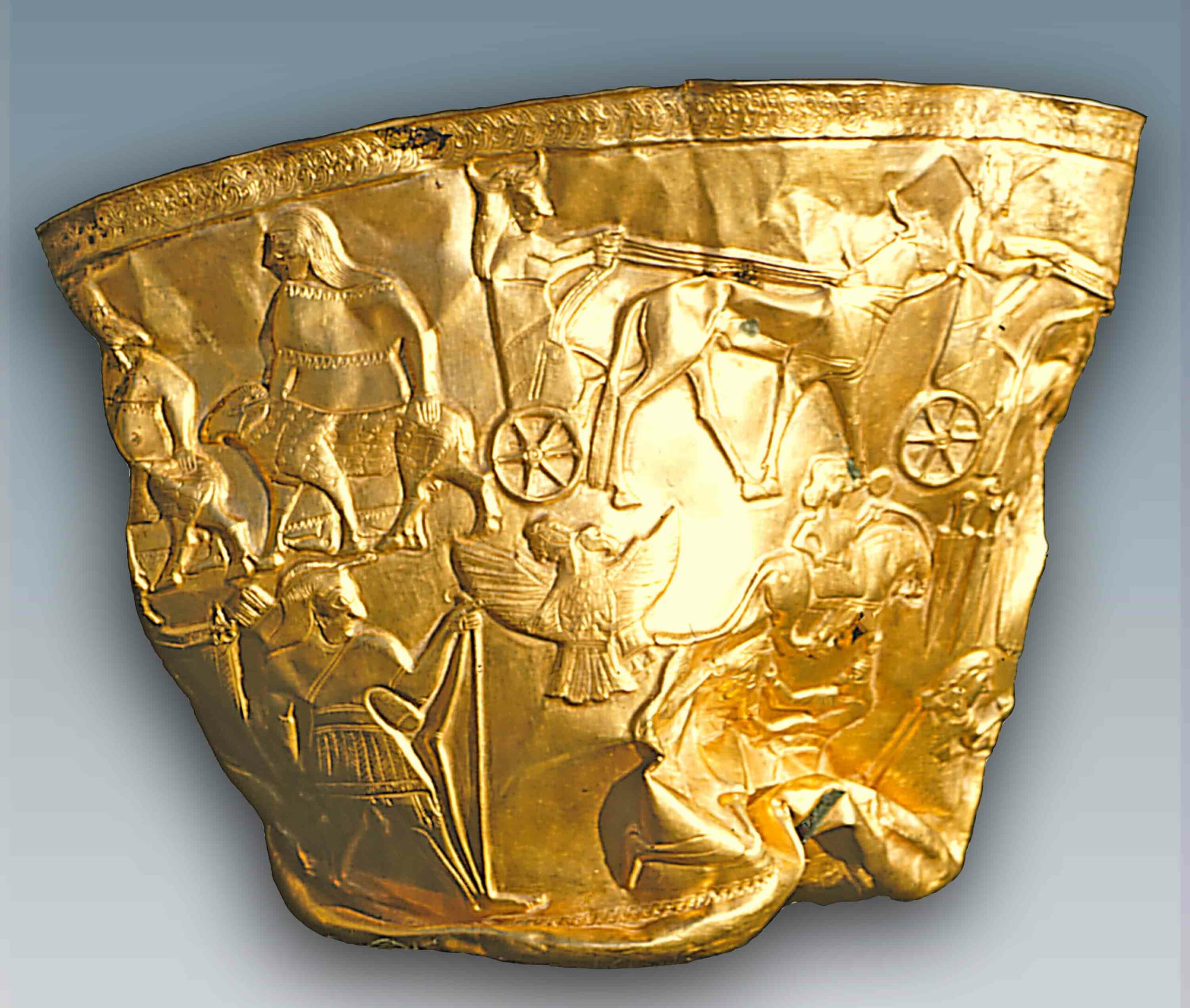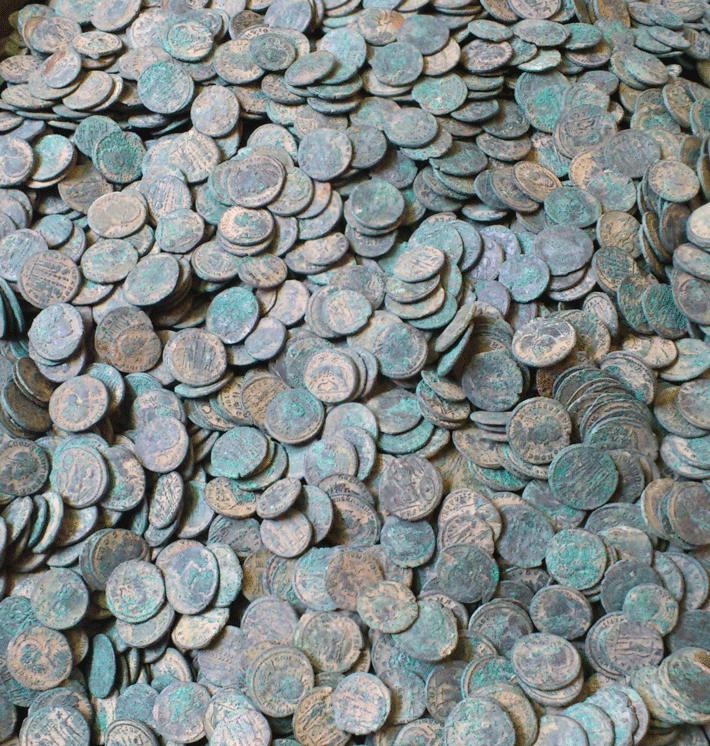
A metal detectorist in southwest England has discovered one of the largest Roman coin hoards ever found. The Seaton Down Hoard consists of 22,000 coins, dating from the A.D. 260s through the 340s. According to Vincent Drost, a British Museum numismatist researching the coins, the hoard may represent an individual’s private savings, a commercial transaction, or a soldier’s wages.
Despite the hoard’s remarkable size, it consists exclusively of low-valued copper alloy nummi, making the entire collection worth only the equivalent of a few gold solidi. Nonetheless, it will likely prove valuable to researchers. Archaeologists believe the Seaton Down Hoard was buried in the 340s, during the rule of co-emperors Constantius II and Constans. “A detailed study of the coins will provide important information on the features of Constantinian coinage and on coin use and supply in Britannia in the mid-fourth century,” says Drost.


